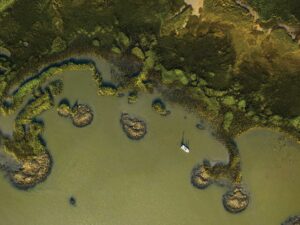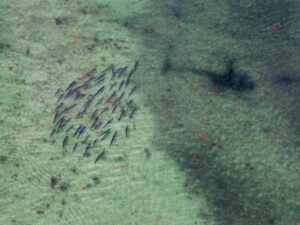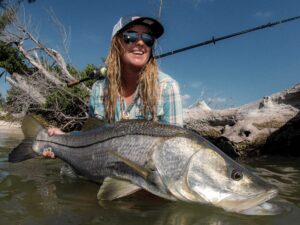The usual striper haunts had not produced, and I was about to pull the plug on our May morning outing when I noticed a ripple outside the channel. I put the trolling motor in gear and headed over for a closer look. Once in the neighborhood, I jumped up on the poling platform and couldn’t believe my eyes; a half-dozen enormous bluefish cruised right before us in single file. Without any prompting, my charter client shot a topwater lure in their direction. One pop and kaboom!
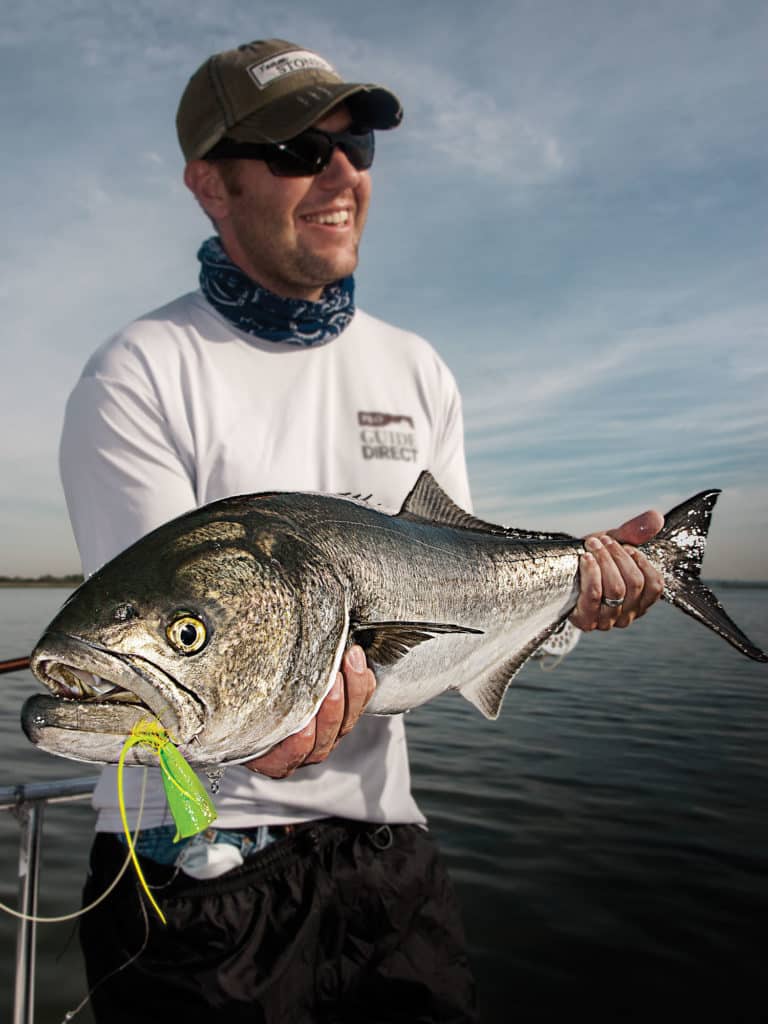
Line screamed off the reel as a big chopper bluefish shot out of the water, shaking violently with gill plates flared. Meanwhile, a second procession appeared to the east, and then another, both packs so shallow that the dorsals of the mammoth blues broke the surface as they glided along.
For the next two hours we chased them around the flats, catching a few more and enjoying their drag-burning runs and extraordinary acrobatics before finally calling it a day. From New York to Massachusetts, this scene plays out more and more during spring. Fishing for bluefish can be a blast, and springtime is often the best time to catch bluefish. Large bluefish show up on the flats sooner than striped bass and in greater numbers, offering anglers a spectacular early fishery, sometimes in water so shallow that my flats skiff can’t always follow.
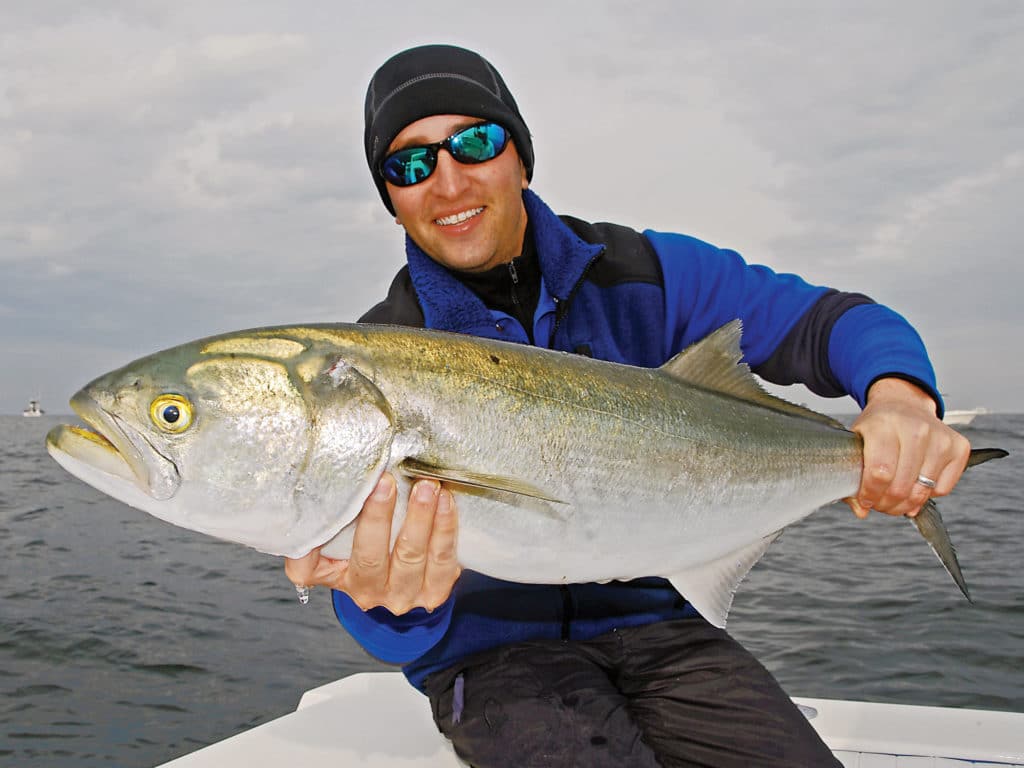
Bluefish Behavior on the Flats
Generally, bluefish are ravenous creatures that eat anything and everything you throw at them. During those times, there’s not really a best bait for bluefish because they all seem to work. But when they get up on the flats in the spring, not only are they skittish and difficult to approach, but they also don’t seem to be feeding.
“You rarely see them chasing bait,” notes Capt. Danny Reich, who makes a living guiding in Jamaica Bay, New York. “And those fish go pretty skinny.” So much so that anglers in New England call them “racers” because they just seem to race in from the south without eating. “And they act weird. They come in strings and daisy chains,” says Capt. David Blinken, a flats fishing guide in East Hampton, New York. “In the spring, they follow each other tail to nose in groups of six to 15. For unexplainable reasons, some break off and daisy-chain like tarpon.”
I’ve had guys throw perfect casts with the best lures for bluefish, then bring them right back across the fish’s path only to have them swim by without so much as a close look.
Every New England and mid-Atlantic guide I spoke with seems to think such behavior is related to spawning. That’s a reasonable assumption, but it’s not entirely correct. According to Dr. David Conover of the Marine Sciences Research Center at State, University of New York (SUNY), there’s consensus that bluefish spawn offshore and usually not until July. But Dr. Thomas Grothues at Rutgers University says the follow-the-leader patterns bluefish exhibit are indeed classic spawning behavior. “When a female bluefish begins to develop eggs, adult males sense this and follow her,” he explains. So it could be a pre-spawning social behavior or, more simply put, flirting.
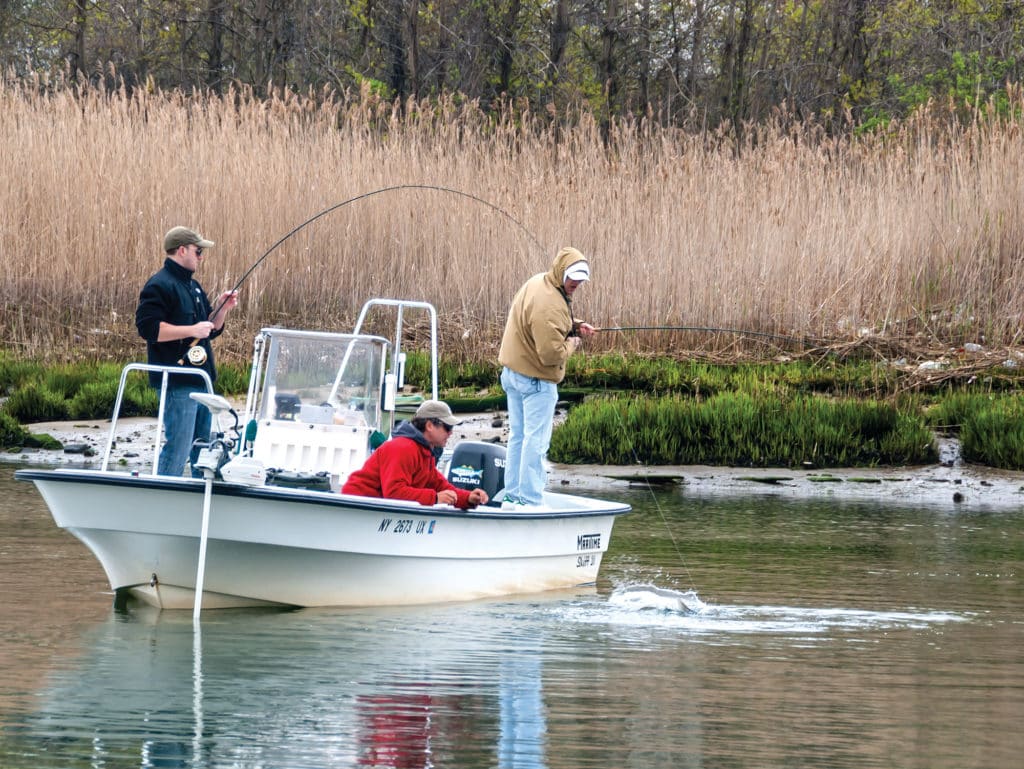
How to Approach Skittish Bluefish
Motor up to these fish and you will certainly spook them. There really are only four options: You can hire a skiff guide to pole you to the fish. You can also stake out or motor up to the flat, drop anchor, and then wait for cruising fish to come to you. Unfortunately, they often don’t come to you. The third option is to get within reach of the fish with an electric trolling motor, although that doesn’t always work.
“Sometimes, particularly when there’s no wind, a trolling motor spooks them,” Blinken says. Last, you can get out of the boat and wade. You lack the high vantage point, but when the blues are so shallow, and they are finning and pushing wakes, that matters little. Wading is the least intrusive approach, and it’s a lot of fun to stalk fish this way.
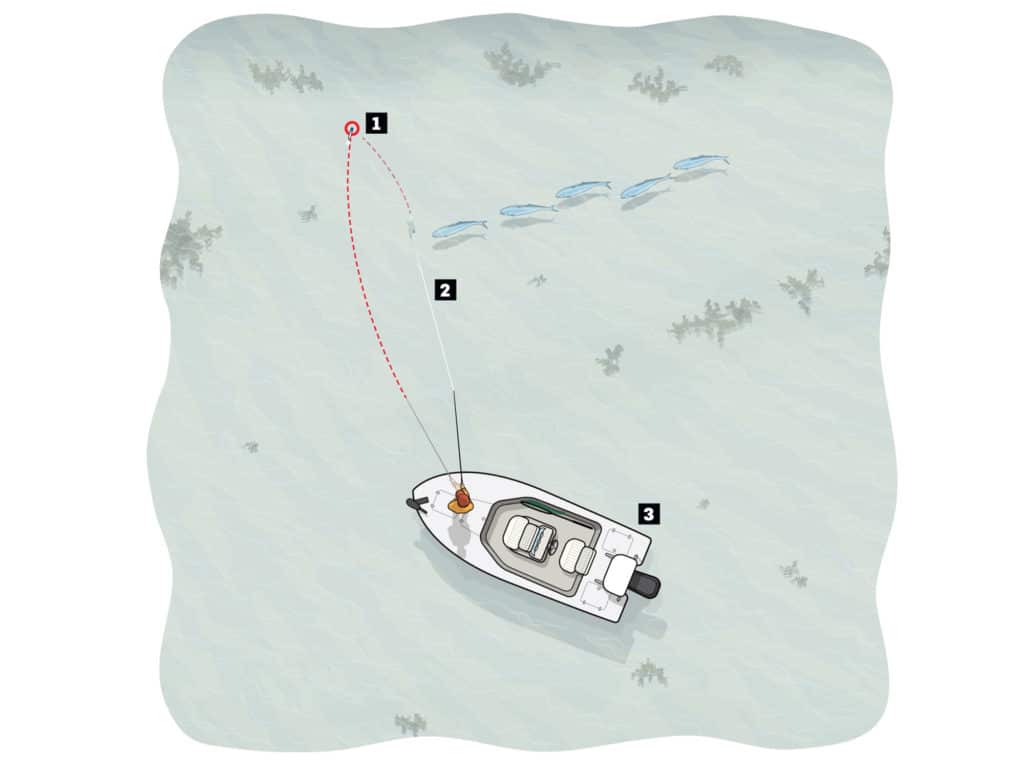
What Bluefish Lures to Use on the Flats
“This isn’t a match-the-hatch situation because there is no hatch,” Reich explains. Sure, there’s usually bait up on the flats, but it’s pretty clear that the bluefish aren’t interested. Nevertheless, these fish will strike if provoked.
“What you really have to do is anticipate where they are going to be,” says Capt. Doug Jowett, who fishes Cape Cod every spring. “Then cast in front of them and bring the lure right across their noses.” Still, in many cases, the fish ignore everything. “I’ve had guys throw perfect casts with plugs, soft plastics and flies, and bring them right across the fish’s path only to have them swim by without as much as a close look.” There’s one lure no bluefish can resist though: a popper. Even when they aren’t eating, a good noisy popper angers a bluefish enough to want to punish the lure. Poppers are great lures for bluefish and get their attention. Usually, at least one fish will break ranks, beeline for whatever that thing making all that noise in the water is, and smash it.
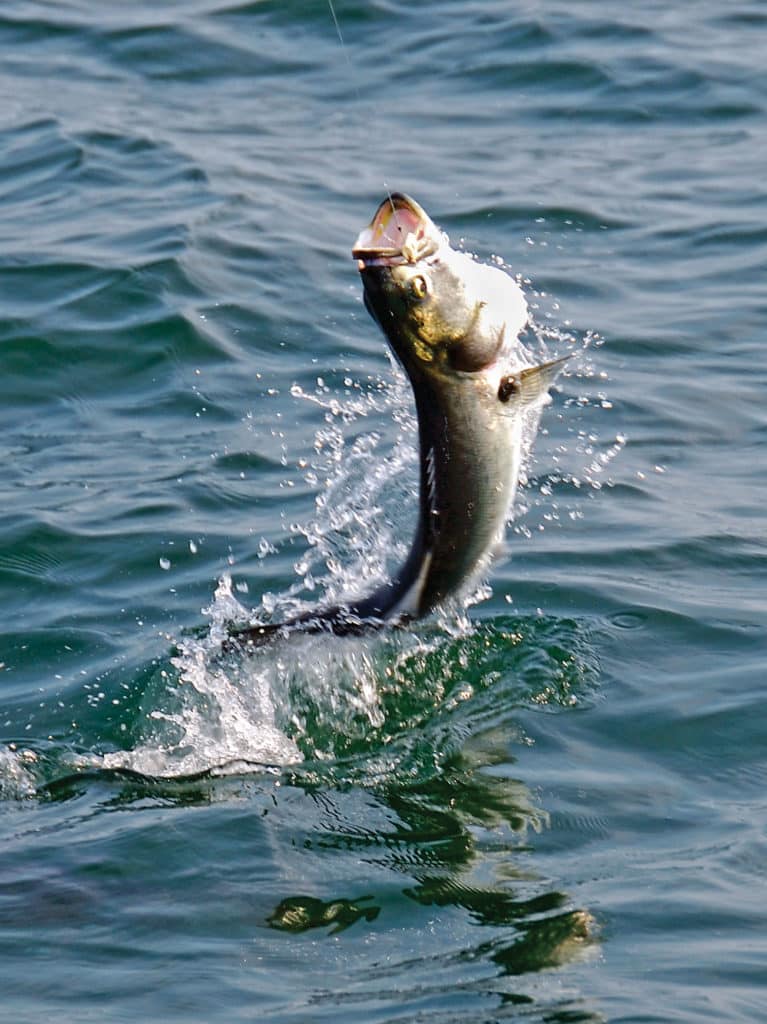
Lures and Baits for Bluefish
Almost any lure that creates surface commotion draws the attention of bluefish. But there’s a caveat: Sometimes the plug landing in the water is enough to spook them.
“I’ve seen it a million times,” Reich says. “Twelve fish in a pack darting off in every direction as soon as a plug hits the water.” While the intent is to create a commotion, there’s a fine line between the right action on the surface and careless casting. The favored strategy is to cast the popper a safe distance away from the fish and reel it into position — ahead of their path — before imparting proper action to the artificial.
It’s best to use smaller lures that land more quietly but still make a lot of noise once in the water. The Guides Secret Baby Bottle Pop is my top choice. It’s only 3½ inches long but is relatively heavy, so it casts well on light spinning gear. The Gag’s Grabber Schoolie Popper works also, but you don’t get the range. And I love the 6-inch Cotton Cordell Pencil Popper.
When worked correctly, bluefish can’t resist it. But because the Cotten Cordell poppers are pretty big, you don’t want to use them on calm days when the fish are particularly skittish.
Fly Fishing for Bluefish
Bluefish on the flats offer a dream scenario for fly anglers. You can fly fish for bluefish without spooking them much easier than with other artificials. We use 9-weight rods with 10- or 11-weight floating lines. Overloading the rod enables quick presentations with fewer false casts, and more easily turns over a large fly or popper. A few feathers and some flash tied on a 4/0 long-shank hook with a medium 2/0 Edgewater Boilermaker foam head are all it takes. This popper is even more enticing if, instead of using the hole in the foam head provided by the manufacturer, you make a hole in the bottom (near the rear) and push the hook shank through it. That alters the angle at which the popper floats, creating louder pops and bigger splashes during stripping.
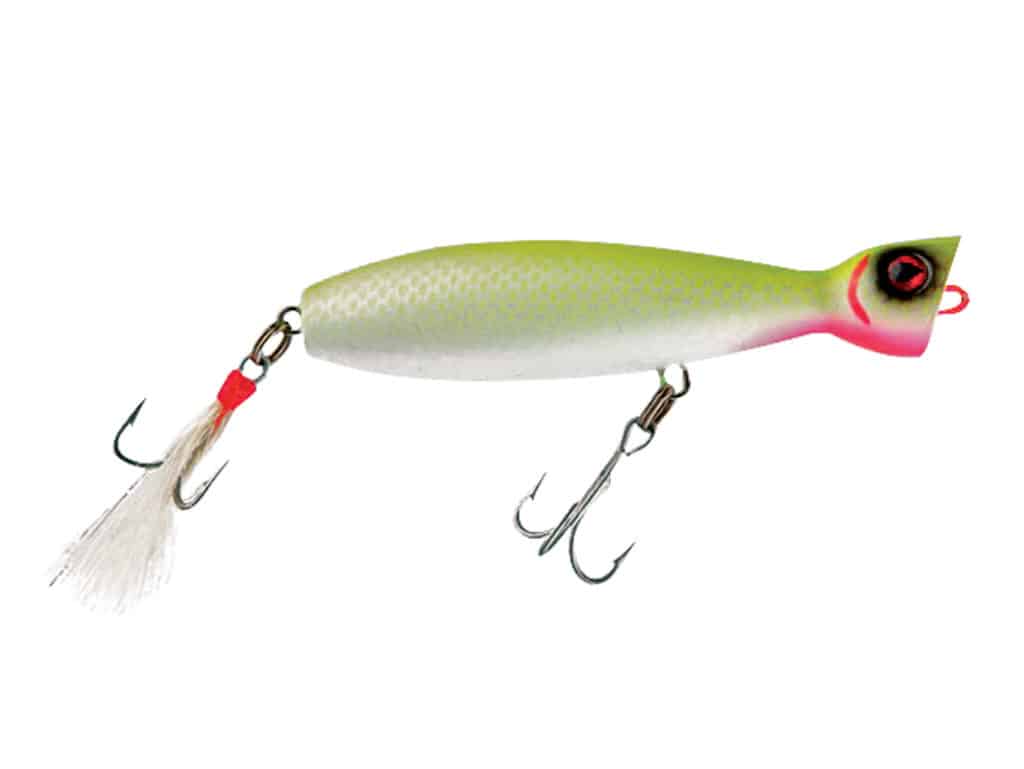
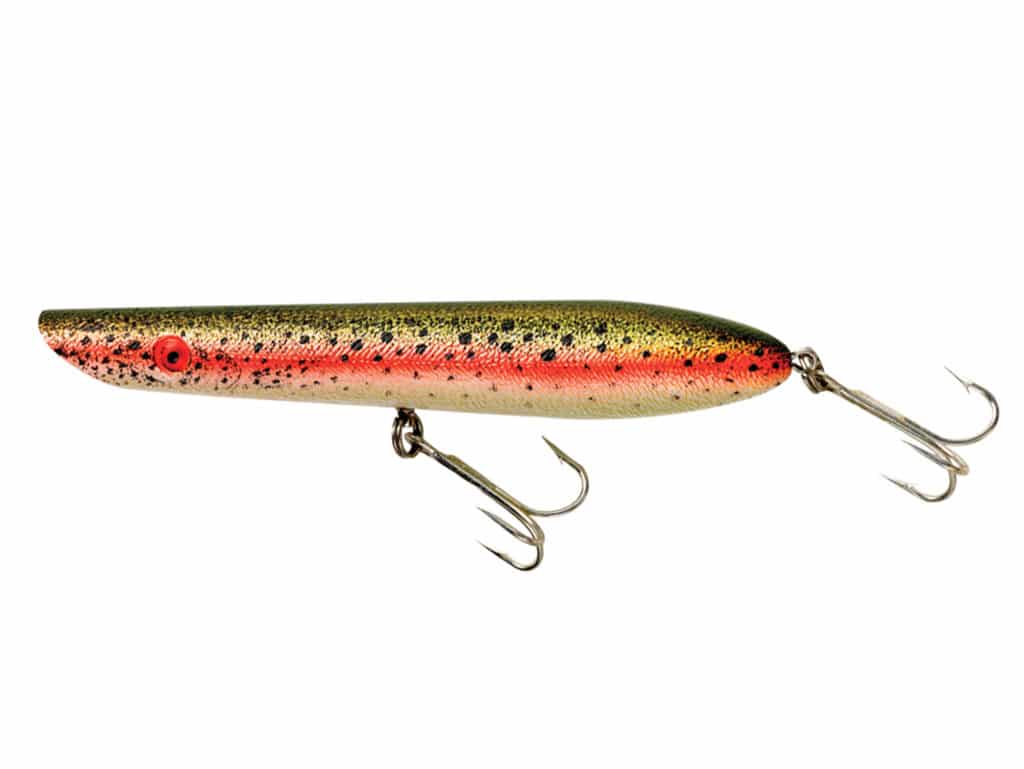
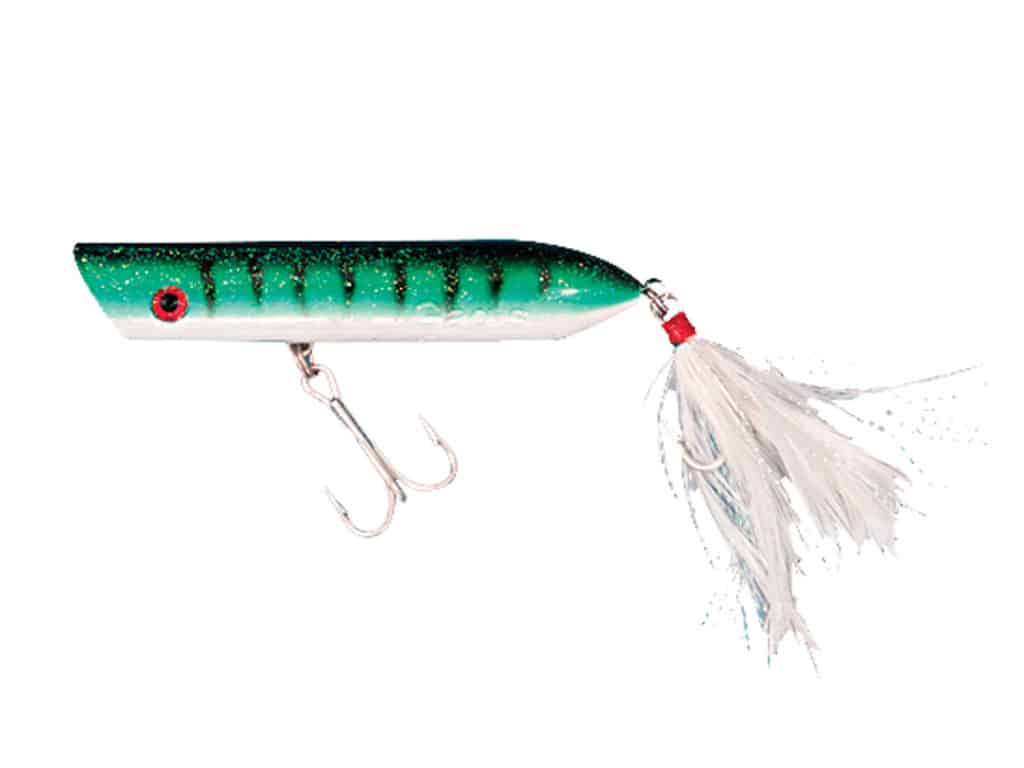
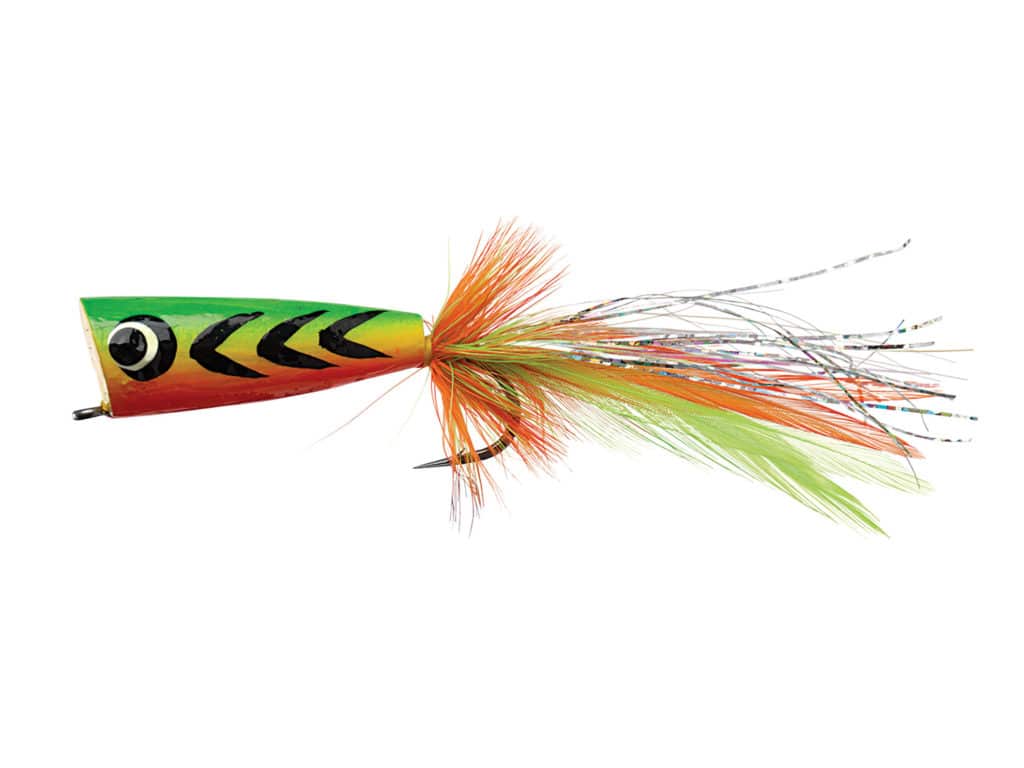
The Size of Your Bluefish Rigs
For the most part, bluefish aren’t picky about the lure type, fly pattern, or the color scheme. It just needs to create a surface disturbance. On the other hand, too big a splash will often spook fish in shallow water. The best baits for bluefish are smaller selections that cast well but land softly.
Captains who fish early May to late June, from New York through Massachusetts, for Bluefish
- Capt. David Blinken, East Hampton, New York
- Capt. John McMurray, Jamaica Bay, New York
- Capt. Doug Jowett, Cape Cod, Massachusetts
Tackle for Bluefish
- Rods: 7-foot, light- to medium-action spinning
- Reels: Matching spinning reel with quality drag
- Line: 15- to 20-pound braid; and 20-pound fluorocarbon leader with a trace of 60-pound fluorocarbon as a bite tippet


